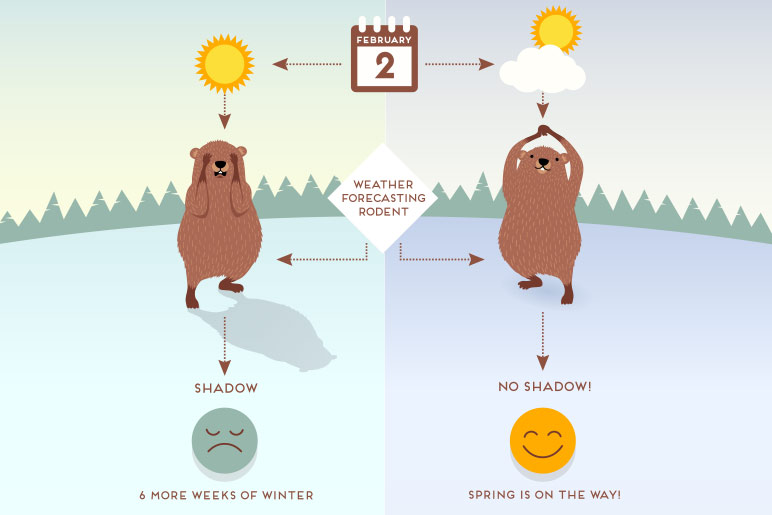
Punxsutawney Phil, the famous groundhog, comes out of his hole at Gobbler’s Knob in Punxsutawney, Pennsylvania every Feb. 2 to make a weather prediction. Though he is only right 39 percent of the time and rarely predicts an early spring (only 18 times since 1886), his appearance brings people from around the world to Pennsylvania.
Groundhog Day actually grew out of an early Christian holiday called Candlemas, where the church would bless candles to bring blessings for the remaining winter. The tradition was brought to Germany where the Germans concluded that if the sun appeared on Candlemas Day, the hedgehog would cast a shadow indicating the “Second Winter.” When the Germans settled in Pennsylvania, they brought the tradition with them. However, finding more groundhogs than hedgehogs, and noting the similarities between the two animals, the weather predicting responsibility moved to the groundhog.
The first official Groundhog Day was in 1886. Today, more than 20,000 people travel to Punxsutawney to participate in the three-day Groundhog Festival; and millions more watch the event on TV or live-streamed on the internet.
For a more regional forecast, Indiana has two of its very own weather-predicting animals: groundhog Chuckie at Wildcat Creek Wildlife Center in Delphi and woodchuck Grubby in Hope. But, thanks to Indiana’s finicky weather, their predictions should also be taken in the spirit of good fun.
Sources: Department of Community and Economic Development of the Commonwealth of Pennsylvania and Punxsutawney Groundhog Club, Inc.
Inside Story is for educational and informational
purposes only. Inside Story is compiled from various sources, which may or may not
be affiliated with our family of companies, and may include the assistance of
artificial intelligence. While we strive to provide accurate and reliable
content, we make no warranties or guarantees about its completeness, accuracy,
or reliability, and are not responsible for the content of any third-party
sources or websites referenced herein. The inclusion of any content does not
establish a business relationship or constitute our endorsement, approval, or
recommendation of any third party. Testimonials and examples provided are for
illustrative purposes only and do not guarantee future or similar results or
outcomes, and may not consider individual circumstances, goals, needs, or
objectives. Inside Story does not provide legal, tax, or accounting advice. For
individual guidance, please consult a qualified professional in the appropriate
field.
Coverages
subject to policy terms, conditions, and exclusions. Subject to underwriting
review and approval.